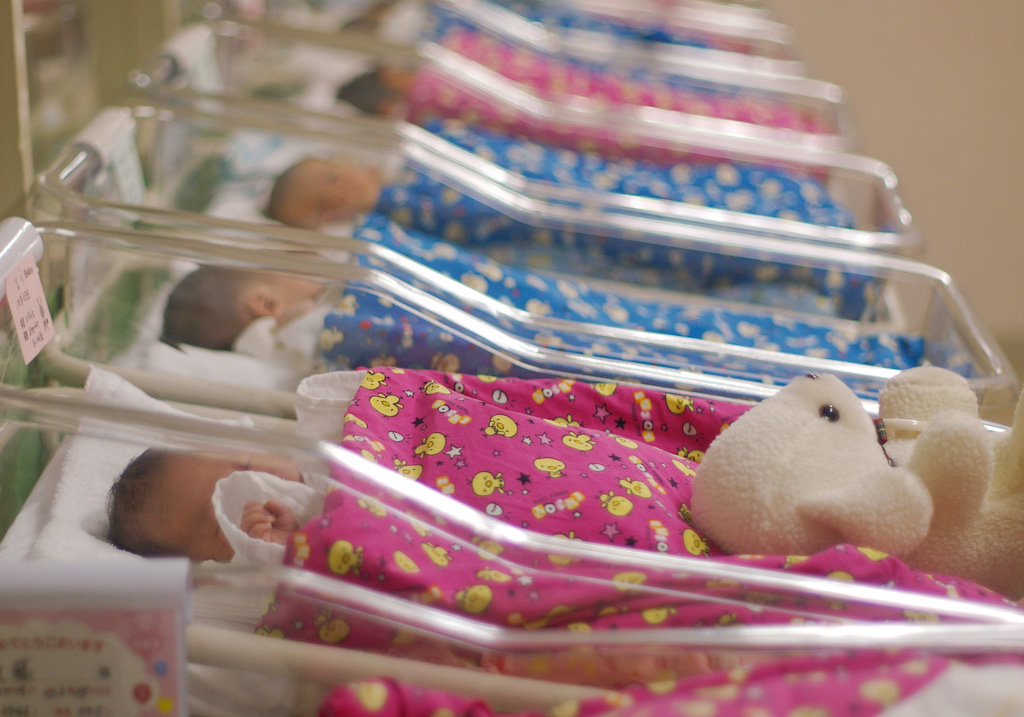After the birth of the Royal Baby, our months of speculation over its sex—A boy? A girl?—will end. But depending William and Kate's use of family heirlooms, the baby might wear pink either way. Historically, before pink became considered a feminine color, it had masculine connotations, too.
Despite today's gender-reveal parties and hyper-girly and boyish baby clothes, it wasn't that long ago that parents dressed infants differently. Some friends recently mentioned that the family christening gown passed down over a few generations — and worn by more than one baby boy — featured pink ribbons. Their son had recently worn it for his baptism. Not only did many of our ancestors once deem pink acceptable for both sexes and even a "strong" color, blue was often seen as appropriate for girls and women, partly due to its association with the Virgin Mary.
As Jo Paoletti recounts in her fascinating history of children's clothing, Pink and Blue: Telling the Boys from the Girls in America, the word "pink" didn't even initially connote a hue and only joined the color vernacular in the mid-19th century. Until the early 20th century, most American babies wore long, white gowns favored for both their practicality (easy to bleach and starch) and lack of gender specificity. When pastels did decorate babies' clothing or nurseries, "pink and blue were suggested as interchangeable, gender-neutral 'nursery colors.'" If a parent did favor one or the other shade, it might depend on the child's coloring.
Though pink and blue began to acquire "gender coding" in the latter half of the 19th century, Paoletti reports that it took almost 100 years for people to uniformly interpret the colors the way we do today. During those days, adults were more concerned with distinguishing adults from children than they were little boys from little girls. Not until age four or five might boys begin to wear clothes that aped their fathers' fashions; before then they often wore dresses largely indistinguishable from those worn by their sisters.
But however much Americans gradually came to perceive pink and blue in such a fashion, this did not make our gender coding globally ubiquitous. "Baby clothes in other countries were still following a variety of rules," Paoletti writes, "meaning that imported items or gifts from overseas continued to observe their own traditional patterns…. Blue was still a 'girl' color in Switzerland, and pink was an acceptable color for baby boys in Korea in the 1980s." (Nor are cultural color differences limited to our baby pastels. The rainbows I see frequently in San Francisco have a very different meaning in Peru, where I saw similar flags in Cusco as a nod to the city's Inca heritage.)
As a knitter of many baby clothes, I tend to follow recent convention in choosing yarn colors, depending on what I know of the child who'll wear my gift. I was a child of the late 70s, and most of my peers are having babies these days. However, Paoletti suggests it's no accident the mothers of my generation are so obsessed with pink and blue baby clothes. Not only can we find out the baby's sex much earlier than our own mothers could, but most of us were raised during the brief unisex clothing fad that followed the sexual revolution.
Paoletti argues that some clothing trends need to be understood in relationship to how the parents buying those clothes experienced childhood themselves. Thus, the current obsession with gender coded children's attire may partly entail a reaction against the clothes we children of baby boomers were forced to wear. Whether or not she's right, Paoletti's book reminded me that the world of color — and gender — is more complex than I sometimes acknowledge.
We often see our habitual ways of doing things as not just preferred, but right. As Christians, it's easy to conflate what seems right to us with what's biblical, particularly when it comes to matters of gender. Much depends on what we think it means to be male or female and what God's intention was when he created the two sexes. But whose views haven't evolved a bit over time? And what's to say we won't undergo further changes in the future?
As a follower of Jesus, I certainly believe in truth, but the human tendency to change should spur humility about our beliefs. The fact that truth exists does not guarantee that we, its human discoverers, are equally infallible in our perception or understanding of the truth. History strongly suggests otherwise.
That's one reason cross-cultural contact — even that as trivial as following the Royal Baby's gender and attire — can be so beneficial. Years ago, I heard Tim Keller give a sermon about the early church in which he remarked that both the Jews and the Greeks had distorted understandings of food. However, their places of confusion were different. Whereas the Jews needed to reckon with what the gospel meant for keeping kosher, the Greeks struggled over meat sacrificed to idols. Perhaps only in hearing Paul's instructions to each other were their own, cultural issues illuminated.
And as Keller pointed out in other sermons, especially on Isaiah, cultural differences also highlight the breadth, depth and complexity of the God whose image we all bear. In the vision of Israel's glorious future, Isaiah sees the nations coming to Israel not with the same gifts, but those particular to their lands and cultures.
We were made by an incredibly big God. If he needed so many different people to fully image himself on earth, perhaps we could all stand to embrace more of the color spectrum as we each go about our image-bearing roles. We used to.









